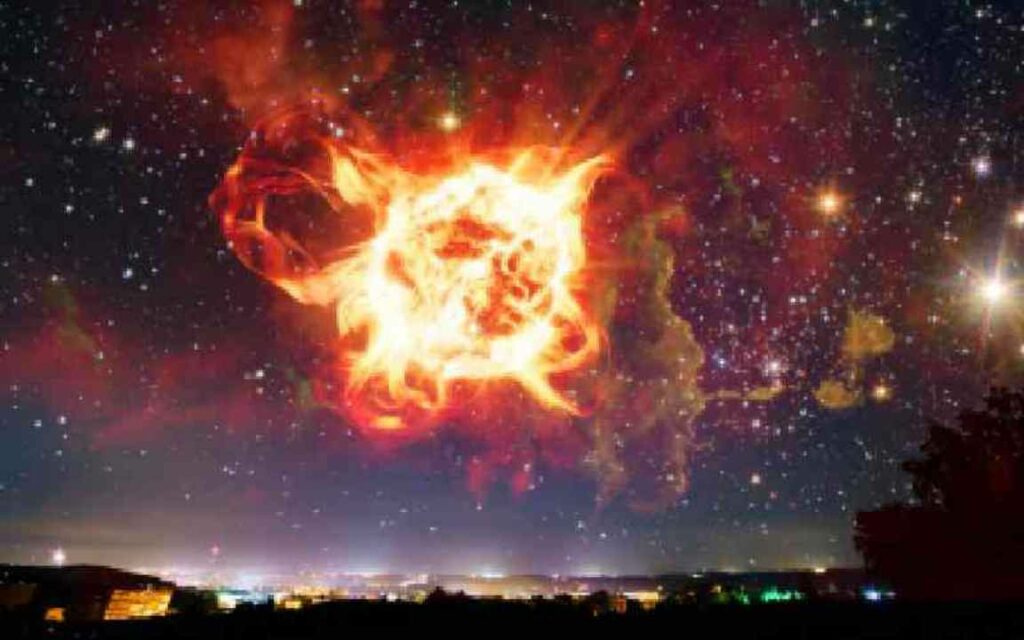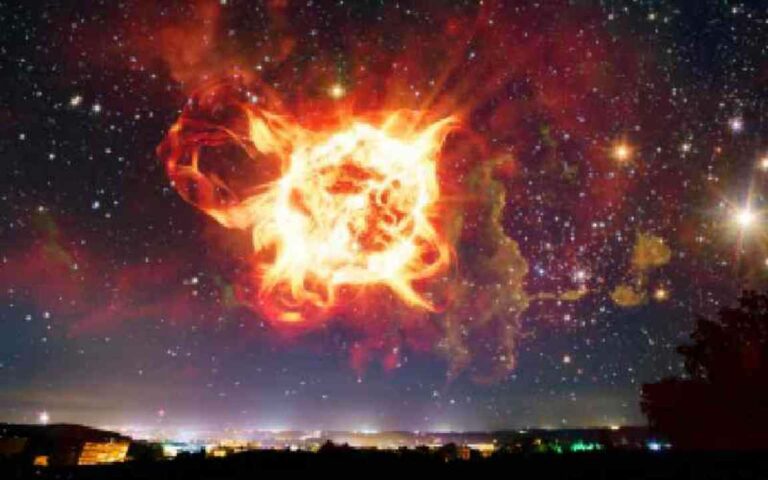A rare celestial event is set to grace the sky as a massive star explosion takes place, promising an awe-inspiring spectacle that occurs only once in a lifetime.
A Super Nova explosion is predicted to take place 3, 000 light years from the earth between now and September and this is a good chance for amateurs to watch this natural event.

A binary star system in the constellation Corona Borealis, the star is usually not bright enough to be seen without the help of optical enhancement. But every 80 years or so, the heat between its two stars – two stars locked in a deadly ballet – provokes a colossal nuclear reaction.
It then emits light which spreads across the universe, thus giving an impression that a new star has appeared in our night sky and radiates light similar to that of the Polaris star as evidenced by NASA studies. This bright phenomenon persists for a few days and captures the interest of astronomers and astronomy enthusiasts.
Notably, this will be the third time in history that this kind of event will have occurred. The discovery was made as early as 1866 by the brilliant Irish polymath John Birmingham who was the first to notice it. It was not seen again until 1946 though, which only served to fuel the interest of astronomers even more.
Arizona State University astronomer Sumner Starrfield, who has been trying to observe the T Coronae Borealis, or the Blaze Star, since the 1960s, was especially excited for the upcoming nova’s “outburst. “
The upcoming show is set to be an exciting event, one which enthusiasts and professionals from the field of astronomy will definitely not want to miss out on.
Starrfield is currently rushing to finish a scientific paper predicting what astronomers will find out about the recurring nova whenever it shows up in the next five months.
“I could be today… but I hope it’s not,” he said with a laugh.
The white dwarf and red giant
Starrfield said there are likely only about 10 persistent novas in the Milky Way and other nearby galaxies combined.
He said, Normal novas go off I think every 100,000 years. Recurrent novas, on the other hand, erupts on the human scale again because of such an affiliation between the two stars.
The first is that of a cool dying star known as a red giant, which has exhausted its fuel and has expanded significantly – the same fate that the sun has in store for it in about five billion years.
The other is a white dwarf, which is the final stage of stellar evolution after the stellar wind has stripped the last remaining layers of water, hydrogen and helium and left just the tiny, super-dense remnant at the core.
This misdistribution is very dramatic that it takes 227 days for T Coronae Borealis’s white dwarf to go round its red giant, Starrfield pointed out.
Both are so close that matter expelled from the red giant in the star’s final stages ends up on the white dwarf’s surface.
That’s because the process takes about 80 years: Once the mass roughly of Earth has built up on the white dwarf it heats up enough to provide ignition for a runaway thermonuclear reaction, according to Starrfield.
This leads to a ‘big explosion’ and within a few seconds the temperature rises upto 100-200 million degrees Celsius said the German retired astronomer who specialises in nova, Joachim Krautter.
The James Webb space telescope will only be one of the views towards the direction of T Coronae Borealis once the outburst starts, as Krautter narrated to AFP.
Oh, but you don’t need this para-botheration technology to view such a spectacle – whichever time of the year it transpires.
“You just have to step outside and look towards the direction of the constellation – Corona Borealis,” Krautter commented.
Some people fortunate enough have already started making plans for the biggest sky show of the year on Monday which is the total solar eclipse sweeping across a section of the United States.
Do not forget to share your opinion with us to provide you with the best posts !




0 Comments